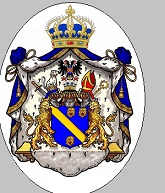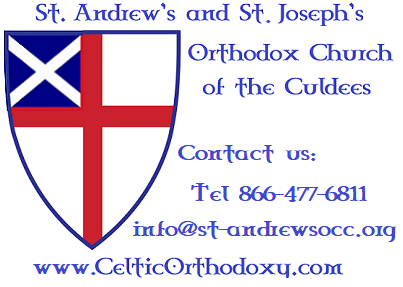APOSTOLIC SUCCESSION LINES
of
Dr Stephen M.K. Brunswick, Primace of the Orthodox Church of the Culdees
Download pdf: Lines of Apostolic Succession Rev Dr. Stephen M.K. Brunswick, Primace, O.C.C.
apostolic-succession-Stephen-St-AndrewsOCCWith Apostolic Succession, more doors are open to minister to the broader body of Christ’s church.
- Archbishop Parker, the first Archbishop of Canterbury in the reign of Queen Elizabeth promised in his letter to Calvin, concerning the proposal of a union among all Protestants, reminding him that the Church of England would “retain her Episcopacy; but not as from Pope Gregory, who sent Augustine the monk hither, but from Joseph of Arimathea.” (“The Life and Acts of Archbishop Parker ” By John Strype, Published in 1711.)
- OCC has recognized Ecclesiastical authority in the Orthodox and Roman churches, to administer sacraments to their visiting members, as they to ours, although “not in communion” with their jurisdiction (scroll down for official church law).
OCC maintains Certificates, Diplomas, Degrees and references for any of the Clergy.
Our English Liturgy (BCP) is not only used in Anglican Celtic and Protestant circles. It is also canonically established in several Orthodox, Catholic, and Lutheran communions.

Grand Marshal, Priory of Salem
Download pdf: Lines of Apostolic Succession Dr. Stephen M. d’Guelph Brunswick
Another view of several lines:

RECOGNIZED TO SERVE IN THE BROADER CHURCH WITH ECCLESIASTICAL AUTHORITY ALTHOUGH NOT IN FULL COMMUNION WITH CATHOLIC JURISDICTIONS.
Read article: Catholic Orthodox History and recognition of Sacraments between them.
Catholic Orthodox History and recognition of Sacraments between them.
THE DOCTRINE OF FAITH, THE VATICAN,
AUGUST 6 2000 17.
17. Therefore, there exists a single Church of Christ, which subsists in the Catholic Church,
governed by the Successor of Peter and by Bishops in communion with him. The [other]
Churches which, while not existing in perfect communion with the Catholic Church, remain
united to her by means of the closest bonds, that is, by Apostolic Succession and a valid
Eucharist, are true particular Churches. Therefore, the Church of Christ is present and
operative also in these Churches, even though they lack full communion with the Catholic
Church…”
CANON 844.3, THE CANON LAW CODE OF THE ROMAN CATHOLIC CHURCH,
(1983)
“Catholic ministers may lawfully administer the sacraments of penance, the Eucharist and
annointing of the sick to members of the Eastern Churches [Orthodox] not in full communion
with the Catholic Church, if they spontaneously ask for them and are properly disposed. The
same applies to members of other Churches which the Apostolic See judges to be in the same
position as the aforesaid Eastern Churches so far as the sacraments are concerned.”
About The Historic Apostolic Succession
FROM THE CANON LAW CODE AND OTHER DOCUMENTS OF THE ROMAN
CATHOLIC CHURCH
St. Augustine of hippo from On Baptism and On The Correction of the Donatists
When these criteria are met, a Bishop is within the Historic Apostolic Succession:
Form: The consecration must be done using the Rites of the Church and in the context
of the Eucharistic liturgy to be valid. This is to emphasize the connection of the
ordaining Bishop(s) within the Church as a Eucharistic Community.
Matter: There must be an actual laying on of hands by a Bishop during the liturgy. A
Prayer is not sufficient in and of itself.
Minister: The one who performs the consecration must be a validly consecrated Bishop
within the Historic Apostolic Succession.
Intention: The intent of the laying on of hands and the prayer within the liturgy must be
to ordain the person as a Bishop of the Church.
Canon 844.3 Canon Law Code of the Roman Catholic Church (1983)
“Catholic ministers may lawfully administer the sacraments of penance, the Eucharist
and anointing of the sick to members of the Eastern Churches not in full communion
with the Catholic Church, if they spontaneously ask for them and are properly
disposed. The same applies to members of other Churches which the Apostolic See
judges to be in the same position as the aforesaid Eastern Churches so far as the
sacraments are concerned.”
Declaration: Dominus Jesu, Congregation for the Doctrine of Faith The Vatican, August
6, 2000
“17. Therefore, there exists a single Church of Christ, which subsists in the Catholic
Church, governed by the Successor of Peter and by the Bishops in communion with him.
The Churches which, while not existing in perfect communion with the Catholic Church,
remain united to her by means of the closest bonds, that is, by Apostolic Succession and
a valid Eucharist, are true particular Churches. Therefore, the Church of Christ is
present and operative also in these Churches, even though they lack full communion
with the Catholic Church…”
UNITATIS REDINTEGRATIO, DECREE ON ECUMENISM, POPE JOHN – PAUL II
NOV 21, 1964
“These Churches, although separated from us, yet possess true sacraments and above
all, by apostolic succession, the priesthood and the Eucharist, whereby they are linked
with us in closest intimacy. Therefore some worship in common (communicatio in
sacris), given suitable circumstances and the approval of Church authority, is not only
possible but to be encouraged.”
Apostolicae Curae papal bull, Pope Leo XIII (1896)
“… where an appropriate Sacramental minister performs the sacramental ritual using
the correct matter and form, with no appearance of jest or simulation, he is presumed
with moral certainty to have acted validly.”
